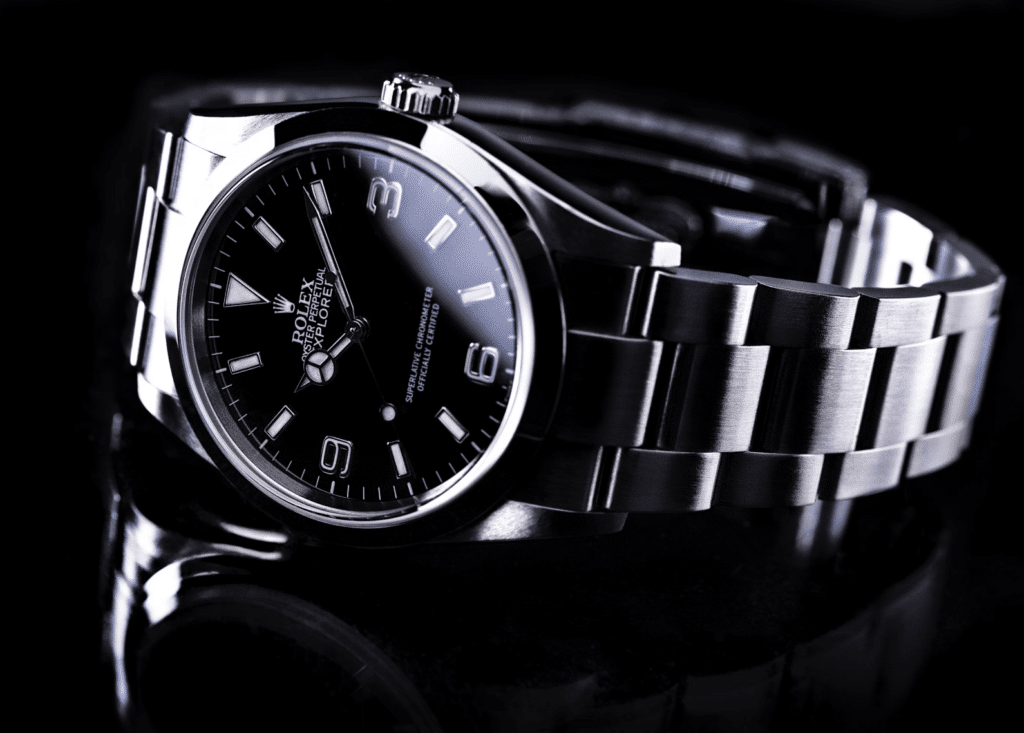At the heart of the fashion business is much more than garments and apparel. It is a company’s ability to build – and monetize – a distinctive brand by way of valuable assets that range from distinctive branding elements to prints and patterns, and proprietary design staples. With that in mind, while intellectual property, or “IP,” represents an important body of law in nearly every industry due to its ability to protect “creations of the mind,” such as novel inventions, ornamental aspects of useful products, literary and artistic works, photographs, and brand names, logos, and aspects of designs, among other things, it is a particularly important one for fashion.
Despite the sheer importance of intellectual property in the fashion industry and beyond, it is a commonly misunderstood body of law, and its various elements are often used interchangeably when they are, in fact, distinct. With that in mind, here is a brief look at the different forms of intellectual property and how they apply in fashion …
The U.S. legal system (as distinguished from the national protections provided in the countries of its international fashion counterparts, such as, Italy, France, and the United Kingdom) provides certain rights and protections for owners of various types of property, including intellectual property. Rights and protections for owners of intellectual property are based on federal patent, trademark and copyright laws, and state law alternatives, and in some cases, may be used to secure rights outside of the U.S. based on intellectual property treaties, such as the Madrid Protocol or the Paris Convention.
In general, these rights consist of patents, which protect novel and useful inventions, as well as the ornamental aspects of such an invention (depending of the type of patent at play); copyrights, which extend to the various forms of artistic expression; and trademarks, i.e., the names and/or symbols that serve to identify the source of a party’s goods/services and distinguish them from those of others. By striking the right balance between the interests of creators and those of the wider public interest, the intellectual property system aims to foster an environment in which creativity and innovation can flourish, and in which consumers are aided in identifying the products of the various players in the market.
The most common forms of intellectual property are as follows …
Copyright Law
Copyright protection extends to “original works of authorship fixed in any tangible medium of expression” from which they can be perceived, reproduced, or otherwise communicated, either directly or with the aid of a machine or device. This means that original poetry, movies, video games, videos, stage productions, paintings, sheet music, recorded music performances, novels, software code, sculptures, photographs, architectural designs, and elements of fashion designs are afforded protection as long as they meet the requisite levels of creativity and originality, which is a relatively low bar, and are “fixed in a tangible medium,” meaning that they are “sufficiently permanent or stable to permit it to be perceived, reproduced, or otherwise communicated for a period of more than transitory duration.”
The owner of a copyright, protection for which exists as soon as the work is created (but must, thanks to a recent Supreme Court decision (Fourth Estate Public Benefit Corp. v. Wall-Street.com), be the subject to a copyright registration with the U.S. Copyright Office before an infringement suit may be filed), has the exclusive right to reproduce, distribute, perform, display, license, and to prepare derivative works based on the copyrighted work, with such rights typically enduring for his entire life and then for 70 years after his death.
The exclusive rights of the copyright owner are subject to limitation by the doctrine of “fair use,” which allows for the use of a copyrighted work for purposes such as criticism, comment, news reporting, teaching, scholarship, or research is not copyright infringement, among other affirmative defenses. To determine whether or not a particular use qualifies as fair use, courts apply a multi-factor balancing test. Find a more in-depth look at copyright law here.
Trademark Law
A trademark is any word, name, symbol, design, or color (as we saw in Louboutin v. Yves Saint Laurent and other cases) or any combination thereof, used in commerce to identify and distinguish the goods of one manufacturer or seller from those of another and to indicate the source of the goods. For example, the trademark “Nike,” along with the Nike “swoosh,” identify the shoes made by Nike and distinguish them from shoes made by other companies (such as those made by Reebok or Adidas).
Trademarks make it easier for consumers to quickly identify the source of a given product or service. Instead of reading the fine print on a can of cola, consumers can garner the marker and likely, the quality they can expect from the product, thanks to the Coca-Cola trademark. Instead of asking a store clerk who made a certain athletic shoe, and what they can expect in terms of reputation from that shoe-maker, consumers can look for particular identifying symbols, such as a swoosh or a pattern of 3-stripes. By making goods easier to identify and enabling a product to also carry with it elements of goodwill, trademarks also give manufacturers an incentive to invest in the quality of their goods.
In the U.S., trademark rights are governed by a first to use system, meaning that in accordance with U.S. law, a party gains rights in a trademark by actually using it in commerce. As such, before a party may be granted a trademark registration (which is not necessary in order to amass rights in a mark, but brings benefits), they must be able to show the U.S Patent and Trademark Office that they are actually using the trademark. This is distinct from the first-to-file system maintained in an array of international jurisdictions, such as China.
Unlike copyright and patent rights, trademark rights do not last for a fixed duration. Trademark rights can potentially last indefinitely as long as the owner continues to use the mark to identify its goods or services, and polices unauthorized uses of its mark so that it continues to identify a single source in the market and not become generic.
The term of a federal trademark is 10 years, with 10-year renewal terms. However, the USPTO requires that between the fifth and sixth year after the date of registration, the registrant must file an affidavit stating that the mark is still in use. If no affidavit is filed, the registration is cancelled.
Find a more in-depth look at trademark law here.
A subset of trademark law, trade dress, is a particularly relevant type of trademark law in fashion, as it provides protection for the overall image of a product, such as the color, shape, size, and/or configuration, as long as the design has the same source-identifying function as a traditional trademark, such as a logo or word mark), the mark or configuration at issue must be distinctive (and thus, not generic) and non-functional. The definition of trade dress is broad, extending to “the total image of a product,” and it “includes features such as size, shape, color or color combinations, texture, graphics or even particular sales techniques.”
Since product configurations can never be inherently distinctive (as the Supreme Court established in the Wal-Mart v. Samara Bros. case in 2000), in order to claim trade dress rights in an unregistered mark, the rights holder must be able to show that the trade dress has acquired secondary meaning, which is commonly established by way of a showing of the following elements: consumer surveys showing that actual consumer associate the trade dress with a particular source; advertising expenditures by the rights holder in connection with the trade dress-bearing product;, unsolicited media coverage of the specific trade dress-bearing product; worldwide sales for the trade dress-bearing product; the length, degree, and exclusivity of use of the trade dress; and attempts by others to copy the trade dress.
In much the same way as a traditional trademark (i.e., a brand name, logo, etc.), trade dress creates a visual impression that acts as an indicator of source. For example, Hermès enjoys trade dress protection in connection with the appearance/design of the Hermès Birkin bag because the more than 30-year old bag is so iconic that its appearance, alone, signifies the source of the product (Hermès) to consumers – much like the Hermès’ “H” logo or the Duc carriage with horse signifies the famous design house.
As such, the following elements of the Birkin are protected: “a distinctive three lobed flap design with keyhole shaped notches to fit around the base of the handle; a dimpled triangular profile; a closure which consists of two thin, horizontal straps designed to fit over the flap, with metal plates at their end that fit over a circular turn lock; a padlock which fits through the center eye of the turn lock; and typically, a key fob affixed to a leather strap, one end of which is affixed to the bag by wrapping around the base of one end of the handle.”
Find a more in-depth look at trade dress law here.
Patent Law
A patent is an exclusive right granted in connection with an invention, which, per the WIPO, “is a product or a process that provides, in general, a new way of doing something, or offers a new technical solution to a problem.” Patents fall into one of a few categories: (1) design patents (those based on a product’s decorative, non-functional features, i.e., elements of its appearance); (2) utility patents (inventions of new and useful processes, machine, manufacture, or composition of matter, or new and useful improvements thereof); and (3) plant patents (new and distinct, invented or discovered asexually reproduced plants including cultivated sports, mutants, hybrids, and newly found seedlings, other than a tuber propagated plant or a plant found in an uncultivated state).
Patents are issued by the U.S. Patent and Trademark Office, and confer upon the patent holder the right to exclude others from making, using or selling the invention throughout the United States, as well as the right to prevent others from importing the invention into the United States
As a result of such rights, a patent owner may give permission to (or license) other parties to use the invention. He may also sell the right to the invention to someone else, who will then become the new owner of the patent. Once a patent expires (usually 15 years for a design patent and 20 years from the filing date for utility patents), the protection ends, and an invention enters the public domain and anyone can commercially exploit the invention without infringing the patent.
Find a more in-depth look at patent law here.
Trade Secret Law
In addition to trademarks, copyright, and patents, there is trade secret law, which protects certain information and can include a formula, pattern, compilation, program, device, method, technique or process. To meet the most common definition of a trade secret, it must be used in business, and give an opportunity to obtain an economic advantage over competitors who do not know or use it.
In short: trade secrets range from sales and distribution methods to consumer profiles, advertising strategies, lists of suppliers and clients, and manufacturing processes, and often make up a very significant portion of any business, including fashion ones, which makes their misappropriation particularly problematic.
According to the U.S. Patent and Trademark Office, “Trade secret protection is a complement to patent protection. Patents require the inventor to provide a detailed and enabling disclosure about the invention in exchange for the right to exclude others from practicing the invention for a limited period of time. Patents do expire, and when that happens the information contained within is no longer protected.” However, unlike trade secrets, “patents may protect against independent discovery. Patent protection also eliminates the need to maintain secrecy. While most anything can be kept secret, there are limitations on what can be protected by a patent. If a given invention is eligible for either patent or trade secret protection, then the decision on how to protect that invention depends on business considerations and weighing of the relative benefits of each type of intellectual property.”
*This article was initially published on August 4, 2017, and was updated to reference the 2019 Supreme Court decision in Fourth Estate Public Benefit Corp. v. Wall-Street.com.














